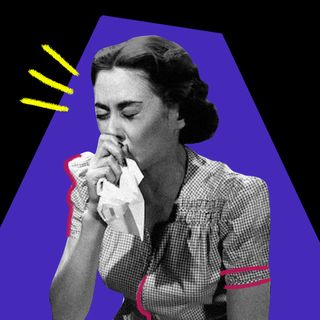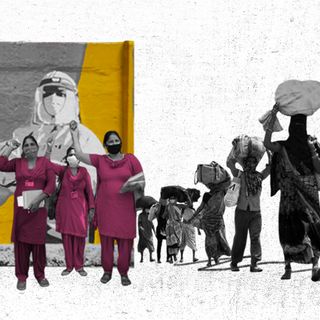India is witnessing a second wave of Covid19, and health experts think the rise in cases is fuelled more by public laxity and waning infrastructure rather than Covid19 virus mutations. Mumbai detected the first case, nationally, of a double Covid19 mutation earlier this month; and several cities have also detected cases of virus strains found in the U.K. and South Africa.
“Old virus or new virus, they all spread through the same route — that is our own carelessness. As soon as we stop following the appropriate behavior, Covid19 will come back,” Dr. Samiran Panda, a tropical medicine specialist and scientist working with the Indian Council of Medical Research (ICMR), told The Print. He added that “there is no firm evidence yet to establish that mutants are the reason behind the surge… What is established is relaxed behavior among the general public.”
Dr. Panda places the blame on large-scale public gatherings like religious events, election campaigns, and marriage parties — essentially, all “congregations where asymptomatic, symptomatic people spread the infection.” In the backdrop of Holi, several states and union territories — including Maharashtra, Gujarat, Madhya Pradesh, Uttar Pradesh, and Delhi — banned public celebrations last weekend and imposed guidelines, aimed at curbing the worrying spike. Last November, Covid19 cases surged by 11% in New Delhi following long-drawn Diwali celebrations.
Dr. Balram Bhargava, Director General of the ICMR, also noted that mutations are “sporadic, but not significant” in the spread of the virus. He reasoned that ramping up mechanisms like contact tracing, testing, and vaccination drives instead can go a long way in addressing the surge.
Besides implementing social distancing measures, the Ministry of Health and Family Welfare has now asked states and union territories to vaccinate everyone above the age of 45 within two weeks in every district witnessing a rapid transmission.
Related on The Swaddle:
What Are Covid19 ‘Immunity Passports’ and Will They Work?
In addition, “each district, irrespective of whether it is seeing a surge right now or is with a current low burden, should make a district action plan with clear timelines and responsibilities,” a letter, by Union Health Secretary Rajesh Bhushan sent to all the states yesterday, reads.
The directions followed a high-level review meeting with representatives from the worst-affected states and union territories, chaired by Bhushan. Under the second wave, infection numbers have risen from 18,377 to 50,518 in just 17 days, between March 11 to March 27, 2021, Times of India reported. On the contrary, the rise from 18,000 to 50,000 cases had taken 32 days during the first wave.
In addition to vaccinating aggressively, he strongly believes that social distancing, which has been the buzzword since last March, could continue to be the key to limiting the spread of the infection. “One infected person could spread Covid19 to an average of 406 other individuals in a 30-day window without restrictions — which could be reduced to just 15 by decreasing physical exposure to 50%, and to a further 2.5 by decreasing physical exposure to 75%,” he noted.
The government has also sounded the alarm, urging people to not let their guards down. “The situation is going from bad to worse,” Dr. Vinod Paul, a member of NITI Aayog, who is also leading the panel responsible for the government’s Covid19 response, said. “This is a serious cause for concern. No state, no part of our country should be complacent. The trends show that the virus is still very active and can penetrate our defenses.”




